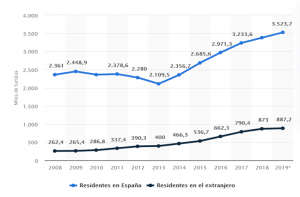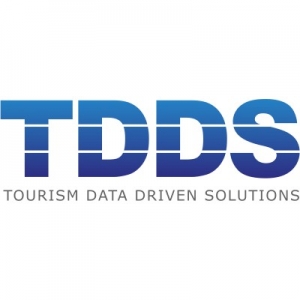In the era of data, rural tourism cannot be alien to it. Professionals working for the development and growth of rural areas need to incorporate valuable information into their daily management and decision making.
Today, it is essential to have data that helps me understand what has happened so far, how the current situation of my company or destination is and what may happen in my environment in the coming weeks, months or even in the coming years.
If we look at some of the available data related to rural tourism in Spain, we see how, on a national level, trips to the interior to practice activities and be in contact with nature have always been of great interest to Spaniards. In 2014, the sector experienced a boom that continued to rise, exceeding four million tourists in 2018.
In Spain, today we have an opportunity to develop more and more rural tourism and open it both to internationalization, since it is still a tourism dominated by national tourists, and to digitization, allowing the entrepreneur to connect with the new demand in a more direct way and effective.
If we look at the graph below, we see how this opportunity for growth and improvement arises for both scenarios, the national and the international.
Annual evolution of the number of tourists staying in rural tourism accommodation in Spain between 2008 and 2019.

Source: Statista
The total annual number of tourists staying in rural houses and similar establishments in the country, increased by almost two million and reached more than 4.4 million in 2019.
Seeing this example, it becomes evident the need for the Organizations and Associations in charge of this type of tourism, to have tourist intelligence systems that allow them to know through reliable data the situation in which they are, thus being able to take measures effective for its sustainable growth.
On the other hand, in addition to becoming aware of the scarcity of data in the rural tourism sector, we must bear in mind that its development has always been worked under the prism of the contribution it makes to the economy and residents of the lesser areas. inhabited on the planet. And for this reason, we have witnessed how some tourist destinations have resorted to rural tourism in order to diversify their products and markets and spread their benefits inland.
However, today we know that rural tourism does not represent a very realistic tourism development policy. There are many territories that have opted to develop this type of tourism and carry out marketing and communication campaigns in this line and despite this, today they are facing multiple challenges and problems led by a very high percentage of micro-enterprises with hardly any resources.
Some of these challenges, such as high development costs, low yields, low demand, lack of essential knowledge, the predominance of mass tourism operators or connectivity, are linked to the need for specific management models for inland areas with funding and implementation of technology thought for the long term.
In this sense, we see how initiatives such as the one recently presented by the World Tourism Organization, called “Rural Tourism Competition”, emerge with the following categories:
- Startups: new technologies in the field of tourism for rural development.
-
Social Impact: initiatives that contribute to the SDGs.
This type of project precisely seeks to solve the multiple challenges facing the rural world, at the same time that they make us think about the infinite possibilities and opportunities that this lifestyle offers us.
In addition, if we take into account the main characteristics of rural tourism we see how, unlike other types of tourism, it provides a complete tourist experience, offering both accommodation and activities, while favoring the creation of a link with the destination, promoting visitor loyalty.
Also, tourist activity in the rural world attracts entrepreneurs who want to change their lifestyle. However, standards for quality of service, marketing, product development, and economic success vary considerably from region to region.
For all these reasons, we must take advantage of and devise solutions such as the one mentioned above from the UNWTO or the one proposed by SEGITTUR: “ICT Rural Tourism” which tries to promote the use of new technologies in all areas of rural tourism.
And in this sense, we see how rural tourism professionals already have to work on joint initiatives, led by those companies and entities that may have greater weight and representation in the sector. In this way, progress will be made in joint management, in having reliable data for decision-making by all those involved, and in permanently innovating with startups and new entrepreneurs who bring their ideas and knowledge to the rural world.
Rural tourism will be able to gradually create its own identity according to the new digital era that allows all the agents involved to make a joint qualitative and quantitative leap in the coming years.



Leave a Reply
Want to join the discussion?Feel free to contribute!